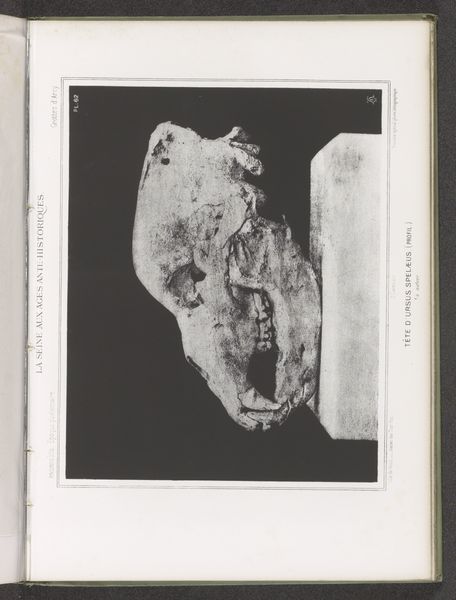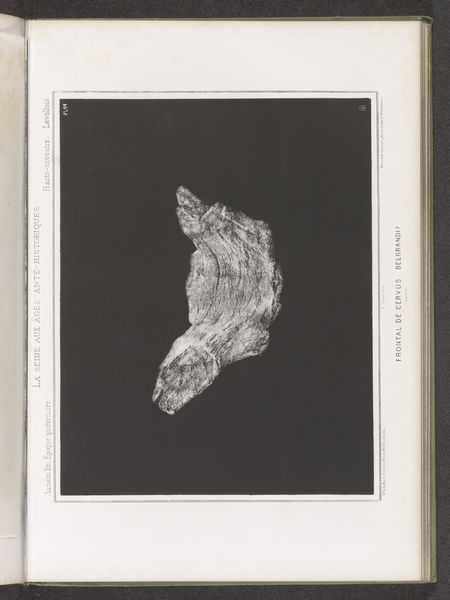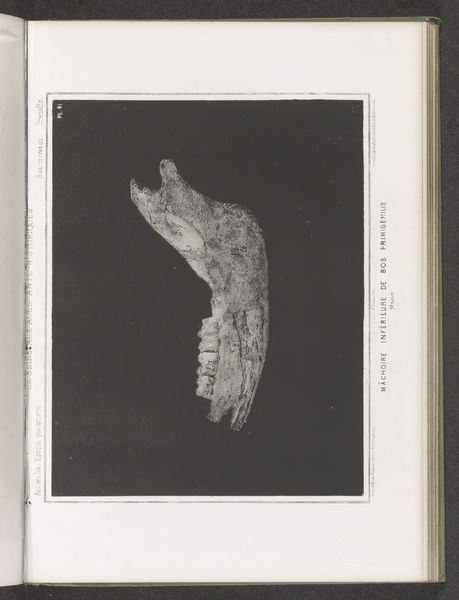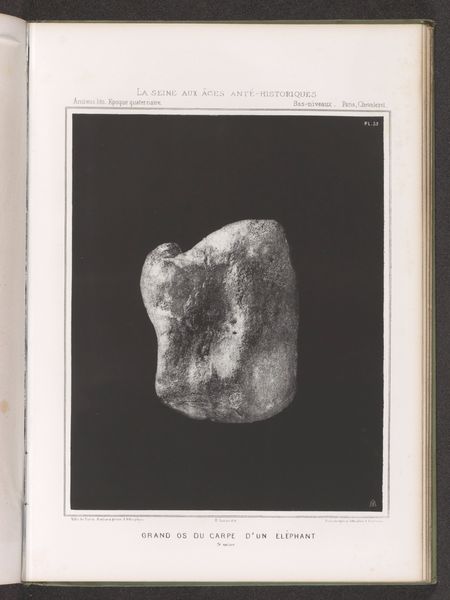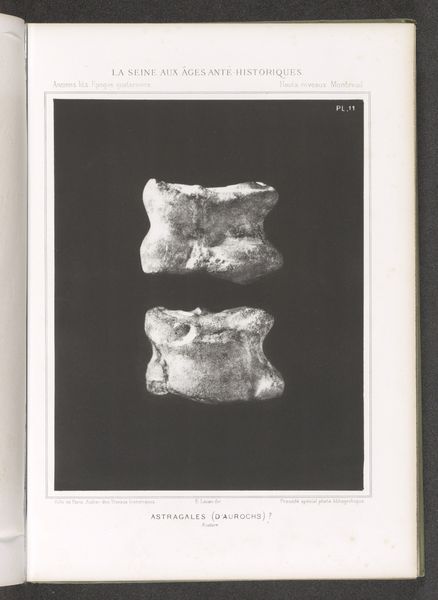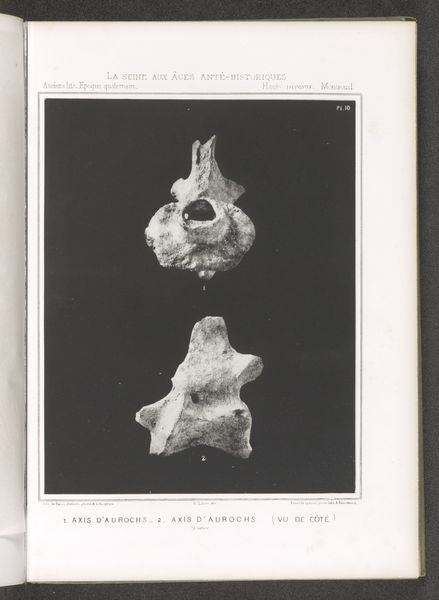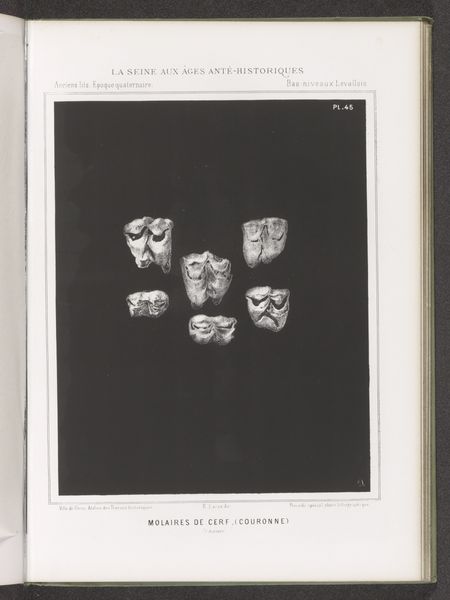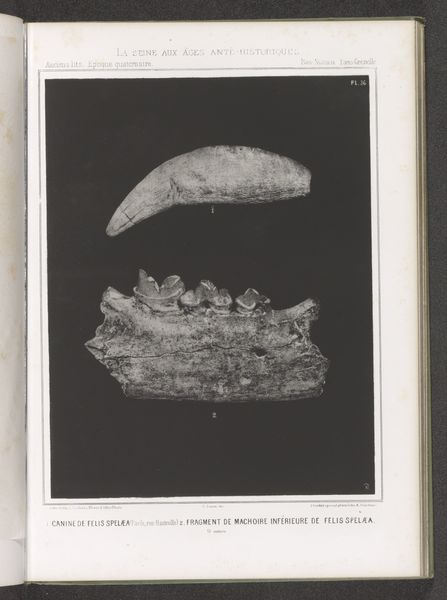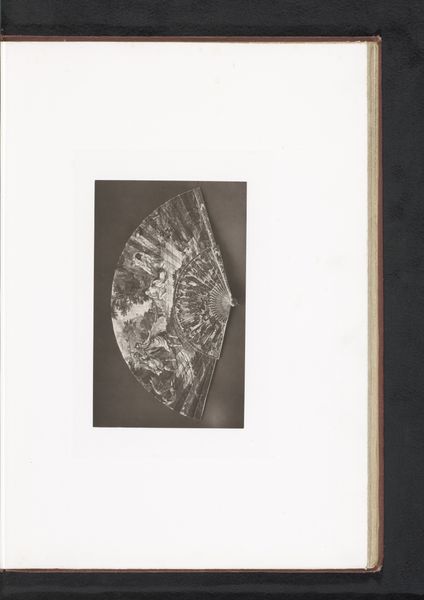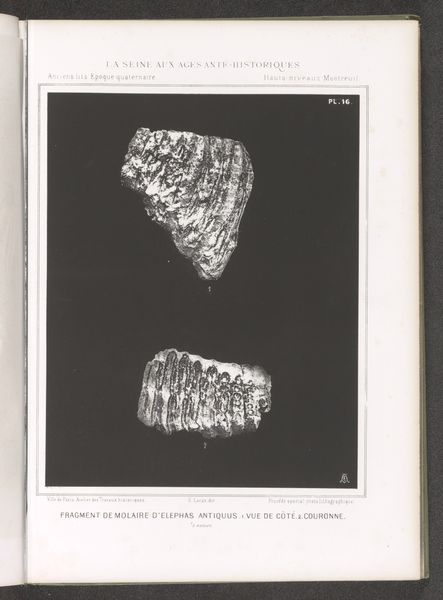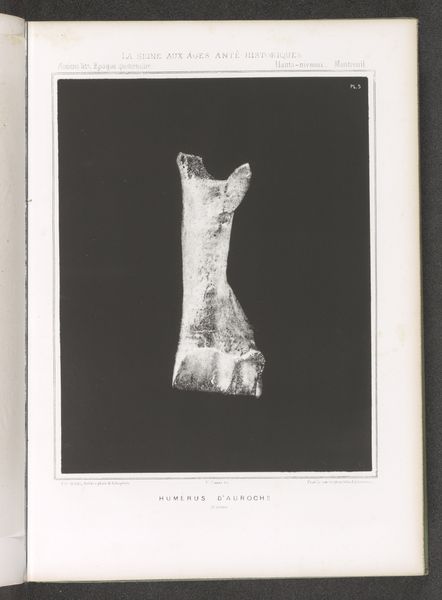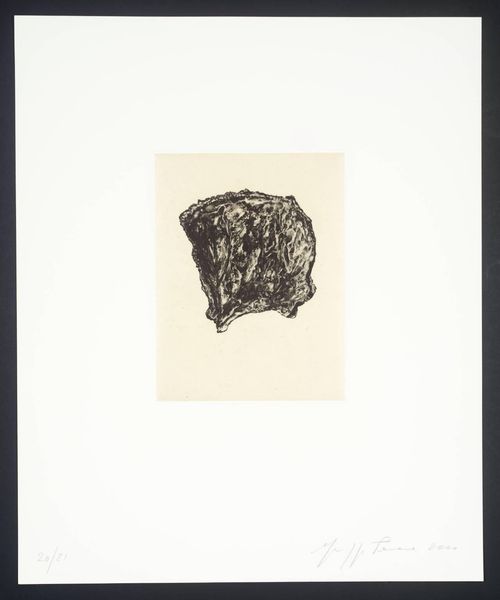
print, photography
# print
#
landscape
#
figuration
#
photography
#
ancient-mediterranean
#
naturalism
Dimensions: height 188 mm, width 237 mm
Copyright: Rijks Museum: Open Domain
Curator: Well, here we have "Skull of a Musk Ox, en Profil," created before 1869. The artwork appears to be a photographic print of a skull. Editor: Stark! The dramatic contrast almost turns this animal relic into an abstract shape, isolated against that infinite black void. I see stark vertical lines which emphasize the subject's inherent roughness. Curator: Absolutely, the way this photograph emphasizes the subject. Think about the context—a desire to document and categorize the natural world emerged in the 19th century alongside the rise of scientific inquiry. This is also right in line with that fascination surrounding the ancient past, even of zoological findings, presented almost as a specimen. Editor: Agreed! And the way that naturalistic presentation almost removes it from time entirely. We lose so much with this extreme close-up. The tight framing seems deliberate. You see just enough texture on the bone to register the passing of time, the decomposition process but nothing beyond it. I do love the naturalism though, very stark but telling about the bone itself, not so much the outside world. Curator: Indeed, that close cropping and focus really underscore what I was saying, about observation. We aren’t shown anything except precisely what matters for classification and recording purposes, I'd guess. And yet it has unintentionally, this kind of timeless feel in the composition. Editor: Do you think its historical significance affects how we approach it visually now? Is it even possible to separate the two? I suppose this type of image could exist because of photography? Curator: Certainly, the photograph acts as a signifier here, and our perception is absolutely informed by historical and institutional practices. It encourages objectivity and authority due to that scientific purpose which shapes it from its creation through to the viewers and academic environments now. Editor: Food for thought...it does invite you in. Curator: Agreed; a study of material that provokes questions. Editor: Indeed, the simplicity keeps calling back and creates some curiosity about the unknown.
Comments
No comments
Be the first to comment and join the conversation on the ultimate creative platform.
